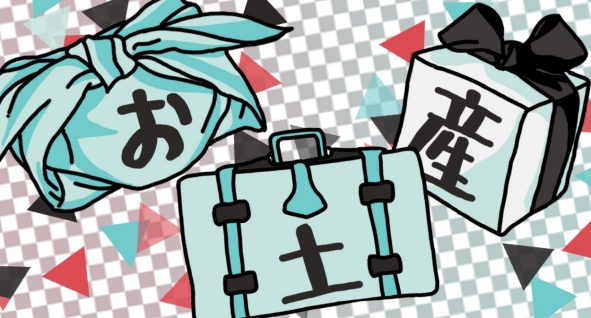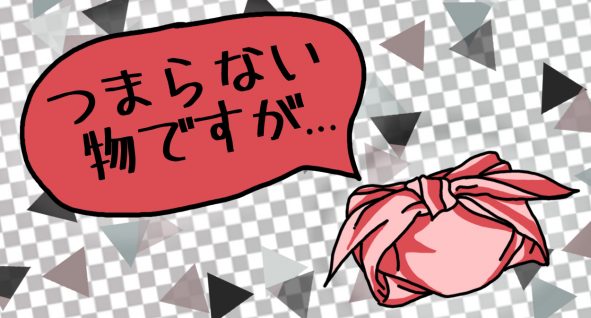
A Guide to Giving Gifts in Japan
#1 Introduction
If you’ve ever heard anything about Japanese culture, it’s that the people there are very kind and generous. When I was in Japan with AFS on a high school exchange, I quickly realized that giving and receiving gifts was ingrained in Japanese society and that there were quite a few rules and norms that might not seem obvious for a westerner. Why and when do you give gifts? What should you say and how should you act when you are on the receiving end? What should you keep in mind when purchasing a gift for others? Luckily, the basics can be learned rather quickly.
#2 The When
There are quite a few occasions where bringing a gift is an unsaid requirement. From a westerner’s view, things like birthdays and Christmas come to mind, but in Japan there’s quite a few more. There’s actually two designated times in the year to give gifts to all of your friends to show gratitude, 御歳暮 [Oseibo] in mid to late December, and 御中元 [Ochuugen] in the middle of the year, July or August. So let’s cover all of these for a bit.
Oseibo – お歳暮 / Ochuugen – お中元
Oseibo is the time of the year just before the New Year [Japan’s most important celebration] Often gifts are sent via post, so don’t be surprised if the post officer is suddenly at your doorstep with a box of fruit. Sending Oseibo is a great way of getting back in touch with people and letting them know how much you respect them.
Ochuugen is basically the same thing as Oseibo, just that it takes place in the middle of the year.
Both of these traditions are getting less and less common though, often only found between companies and business men [I’m saying men here because that’s unfortunately how it is in Japan, gender equality wise]. There are still services though that let you send gifts to friends and colleagues directly though, Japanese efficiency at it’s finest.
Omiyage – お土産
 Omiyage are gifts that you bring [back] with you when traveling. This is why, when you ever visit a tourist attraction in Japan, you will find huge gift shops selling fancy sweets and merchandise. The idea behind Omiyage is “I’m sorry I left you alone for a while, have this gift to show my gratitude.”
Omiyage are gifts that you bring [back] with you when traveling. This is why, when you ever visit a tourist attraction in Japan, you will find huge gift shops selling fancy sweets and merchandise. The idea behind Omiyage is “I’m sorry I left you alone for a while, have this gift to show my gratitude.”
Whom should you give Omiyage?
- If you are doing an exchange program, you should buy Omiyage for your host family, host school, including your teachers and headmaster, the exchange program volunteers or staff.
- If you are working in Japan, you should bring something for your co-workers and supervisors/bosses.
- In general Omiyage are given to friends and family, neighbours and colleagues, and anybody else you have a close relationship with.
What to consider when purchasing Omiyage:
- Make a list before departing, every time I traveled with Japanese people, they always had either a clear list of people in their head or an actual physical list to keep track of whom to get stuff for.
- Since you are expected to give Omiyage every time you go on vacation or travel somewhere and to quite a few people, small snacks are your best bet. An added benefit is that food disappears after you’ve eaten it, so no-one is stuck with a bunch of stuff afterwards.
- If you are giving things to a group of people, try finding a big box of stuff for everybody instead of getting individual things.
- Don’t spend too much money on your gifts, but don’t spend next to nothing either, something between 750¥-4.000¥ should do the trick.
- Make sure that you have enough space in your suitcase or bag to carry all of this stuff back, gift boxes are rather voluminous.
- Make sure your gift is wrapped, but more on that later.
Temiyage – 手土産
When going to a friend or colleagues house where I live, you may take a small gift with you. The 手 [Te] in Temiyage means Hand.
In Japan however showing up at somebody’s house without a present, a Temiyage, is unthinkable. These kinds of “thankfulness” gifts are so ingrained in society that they have become practically mandatory.
When giving somebody a Temiyage, it is important to take a few things into consideration
- Most Temiyage are food, and the host will most likely open it sometime during your stay for you to consume with them, small, individually wrapped snacks are best.
- If you do not know the person you are visiting well, it is generally better to not bring anything homemade.
- Try not to purchase the gift you are giving nearby.
- Present your gift to the host inside, unless you are giving flowers, which should be given at the doorstep.
#3 The What
Now that you know when to give a gift, let’s go over some general guidelines as to what constitutes as a good gift in Japan.
When giving several gifts, it is important to keep these two numbers in mind:
- The number 4 [四 –よん/し] has two readings in Japan, Yon and Shi. The problem with the number four is that its second reading, Shi, sounds like the word for death [死 – し]. For example, if you are giving a gift to a family of four, it is better to get them a box of sweets with 8 things inside.

- The number 9 [九 – く] is less dangerous than the number 4, but it is still best to be avoided since it sounds like the word for suffering [苦 –く].
The same goes for certain colours:
- Don’t use red envelopes, as in Japan, red envelopes are reserved for funeral notices.
- Black is also be associated with death or bad luck, so it is generally
- If you buy envelopes at a store, be sure that you actually know what it says on them, because many have small messages used only for certain holidays, weddings or funerals.
Make sure that your gift is properly wrapped – this is perhaps more important than the gift itself.
- If you are using wrapping paper, make sure it was not damaged when transporting.
- The big reveal is important, so transport your gift in an inconspicuous bag before handing it over.
#4 The How
So now that you have purchased and nicely wrapped your gift, all that is left to do is to hand it over. Even here there are quite a few customs to keep in mind.
- As I just mentioned, you should transport your gift in an inconspicuous bag, as one should hand over one’s gift at the end of one’s visit, and not at the beginning as is the custom in many western countries. The exception here are flowers, which you should give at the doorstep. Furthermore, if you are staying with somebody for an extended period of time, you should have a gift for both your arrival and your departure, the first of which should also be given when arriving.
- Take your gift out of it’s bag in front of the person you are giving it to in private and fold the bag up neatly. If you are in a more formal setting, you are expected to take the bag back home with you to dispose of it.
- If you are using a 風呂敷 [furoshiki] to wrap your gift, unwrap the gift yourself and hand it over, neatly folding up the furoshiki afterwards and taking it back home.
- Hand over your gift with both hands.
- If you are receiving a gift, it is normal in Japan to refuse it humbly a few times before accepting it to show modesty. If you are the person giving the gift, insist kindly.
- Usually one does not open gifts one receives in front of the person who gave it to you.
- After unwrapping your gift at home, be sure to politely bombard your gift-giver with photos and messages about how much you like your gift.
Some useful phrases in Japanese
- つまらない物ですが… – Tsumaranai mono desu ga… – It is nothing much, but…
In Japan, regardless of how much thought you put into your present, you should remain modest and humbly state that what you are getting the person is rather boring, or nothing much. This is especially true if you are giving Omiyage, as the gift is “nothing compared to the trip you went on”. - これ、どうぞ… – Kore, douzo… – Here, have this…
If you are looking for something less formal, use this when giving your gift. This isn’t super informal, but it would be frowned upon in a business setting, or when you are giving a gift to your teachers. - 開けてもいいですか。– Aketemo ii desuka? – Is it okay if I open this?
In Japan it is not common for the receiver of a gift to open it immediately, so, if you really want to open it, you will definitely have to ask first.
#5 Wrap-Up
And that’s everything you need to know to start giving gifts in Japan. This may also help explain why gift shops in Europe and America are always packed with Japanese tourists, they are very rarely getting things for themselves.
I would also like to point out that even though this all sounds very tedious and exhausting, it is not so much having to spend money on everybody, but more growing closer to those people and strengthening bonds.
I hope you enjoyed reading this blog post. Now you are not only an expert in Japanese gift giving, but also receiving, since you can be pretty sure that next time one of your friends goes away, they will bring you something as well, what goes around, comes around.
Send a postcard,
Yona

Wow what a fantastic in depth and informative post! I have no knowledge of Japanese culture and found this really interesting – I’m not sure I could remember all of the do’s and dont’s though!
Thank you for sharing such a fabulous post 😃
Melanie | http://www.frasersfunhouse.com
[…] Japanese culture and gift giving in Japan. If you want to read more about gift giving, I have a complete guide here. If you want to try some more Japanese crafts, I have a simple sewing tutorial […]
[…] A Guide to Giving Gifts in Japan […]
[…] If you’d like to read another guide about Japanese culture, here is one about Japanese Stationery and Japanese Gift Giving Culture. […]